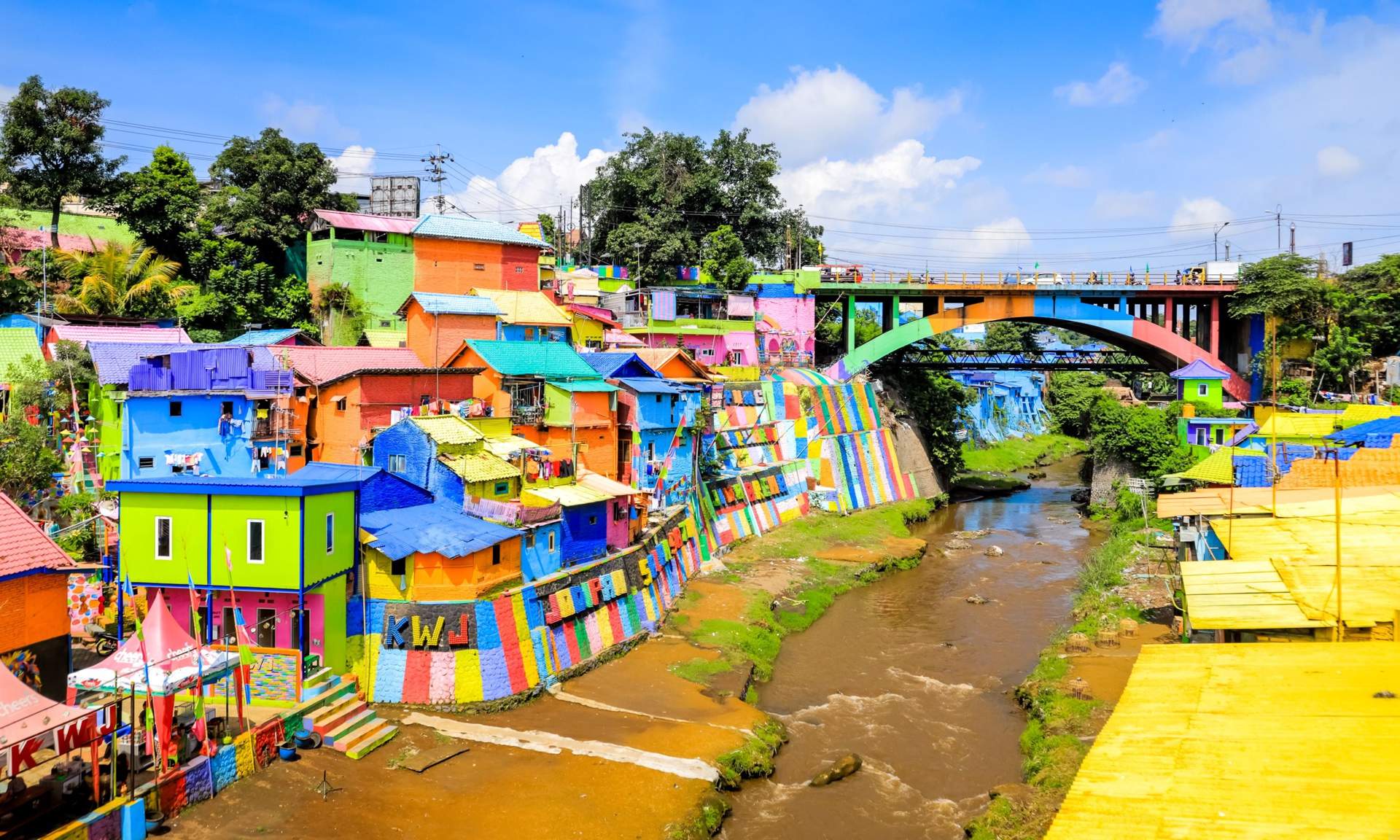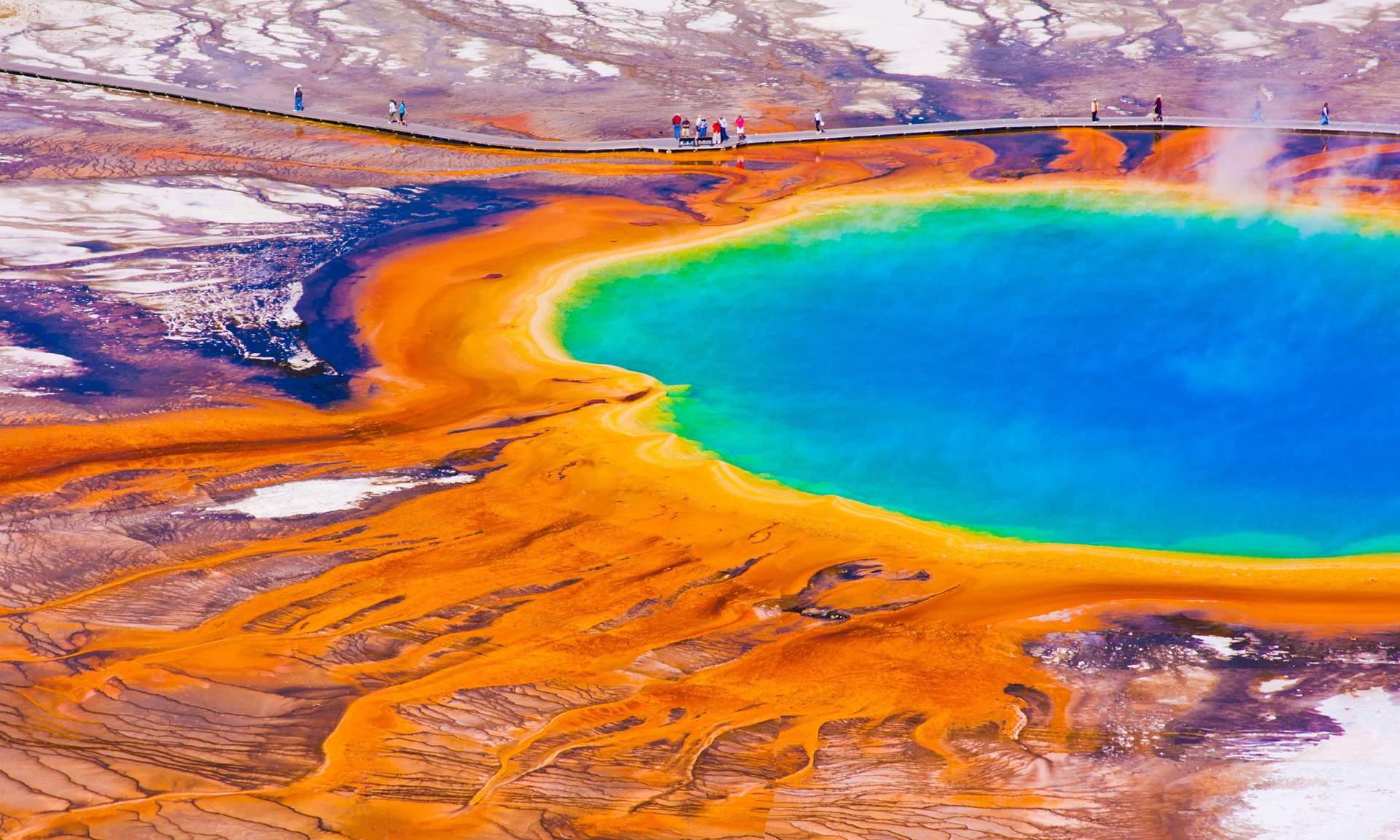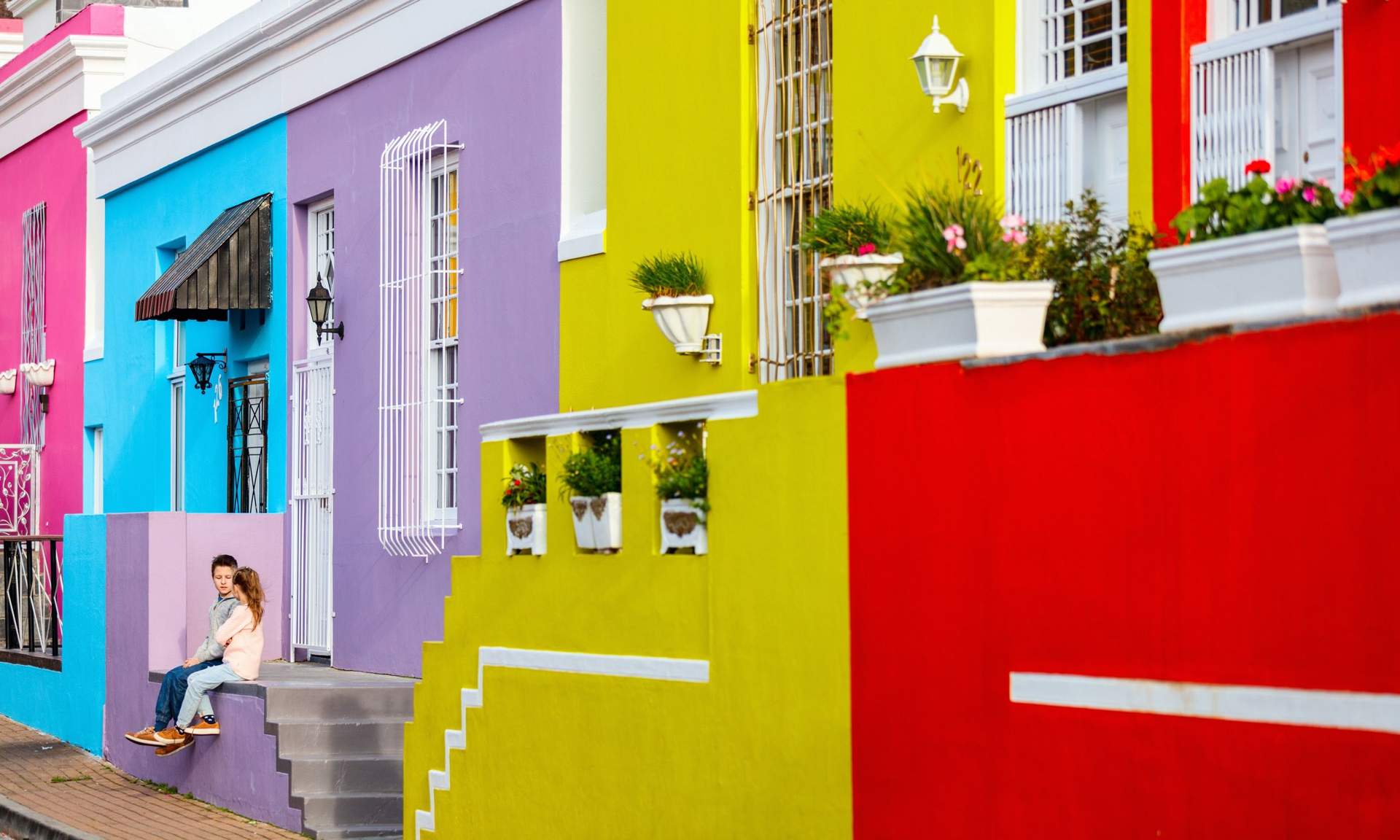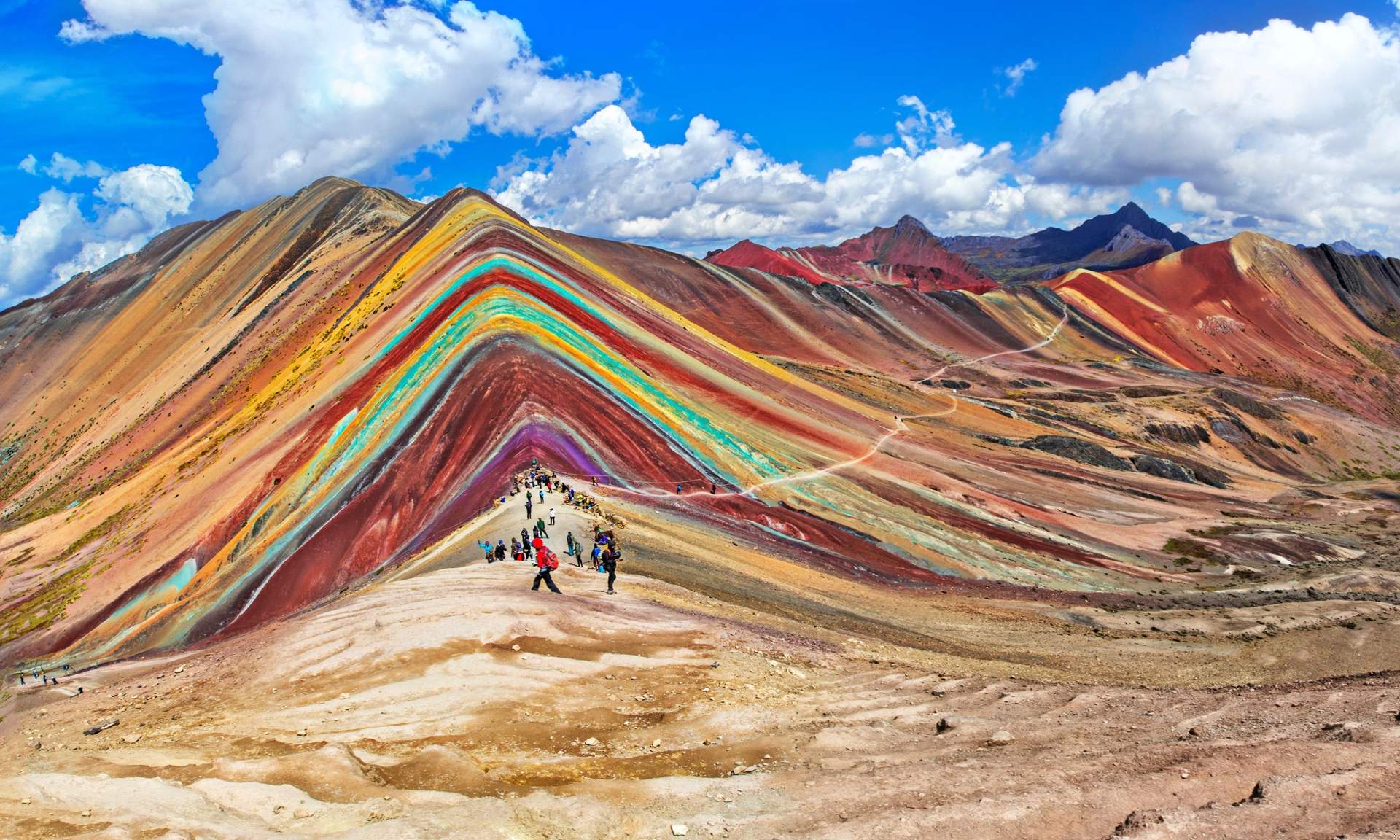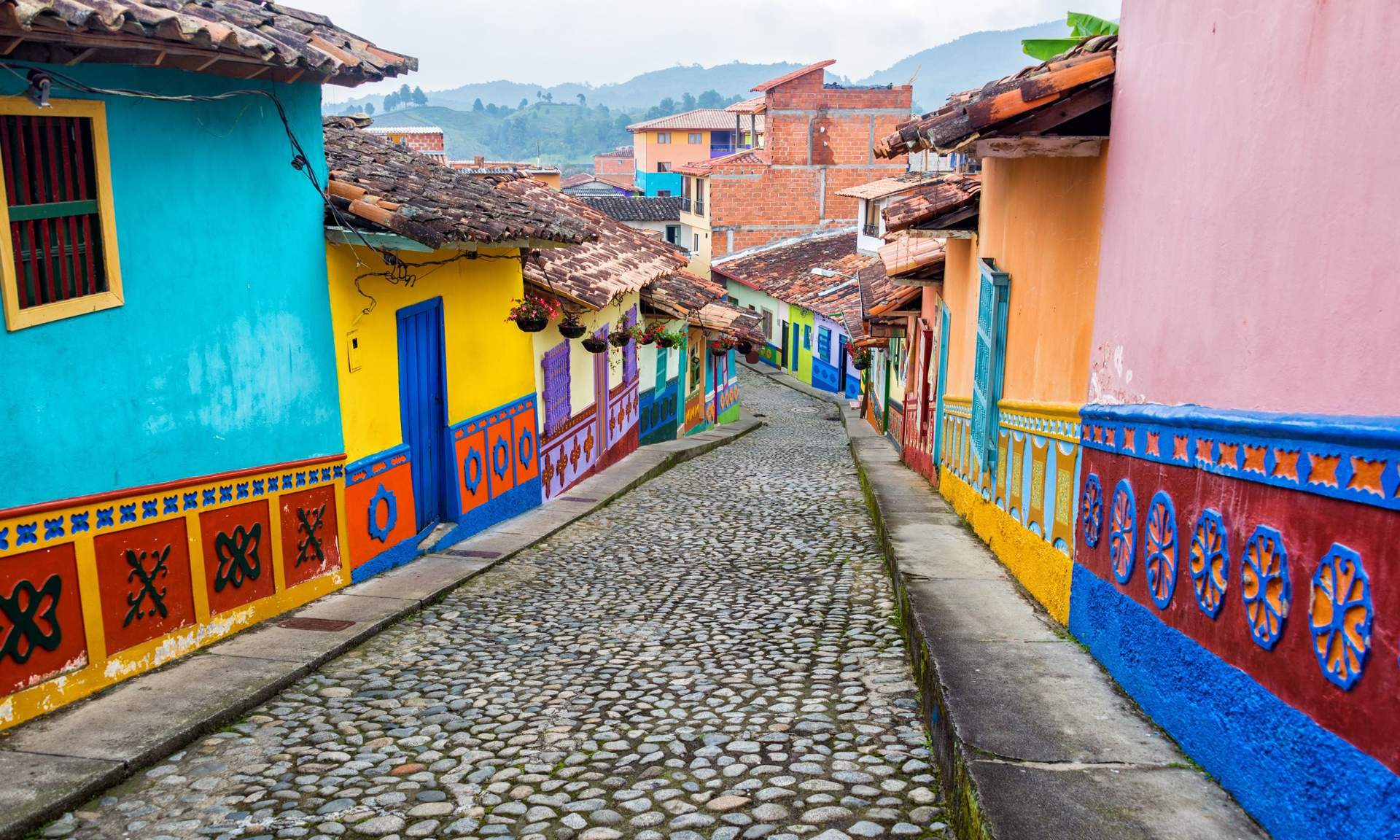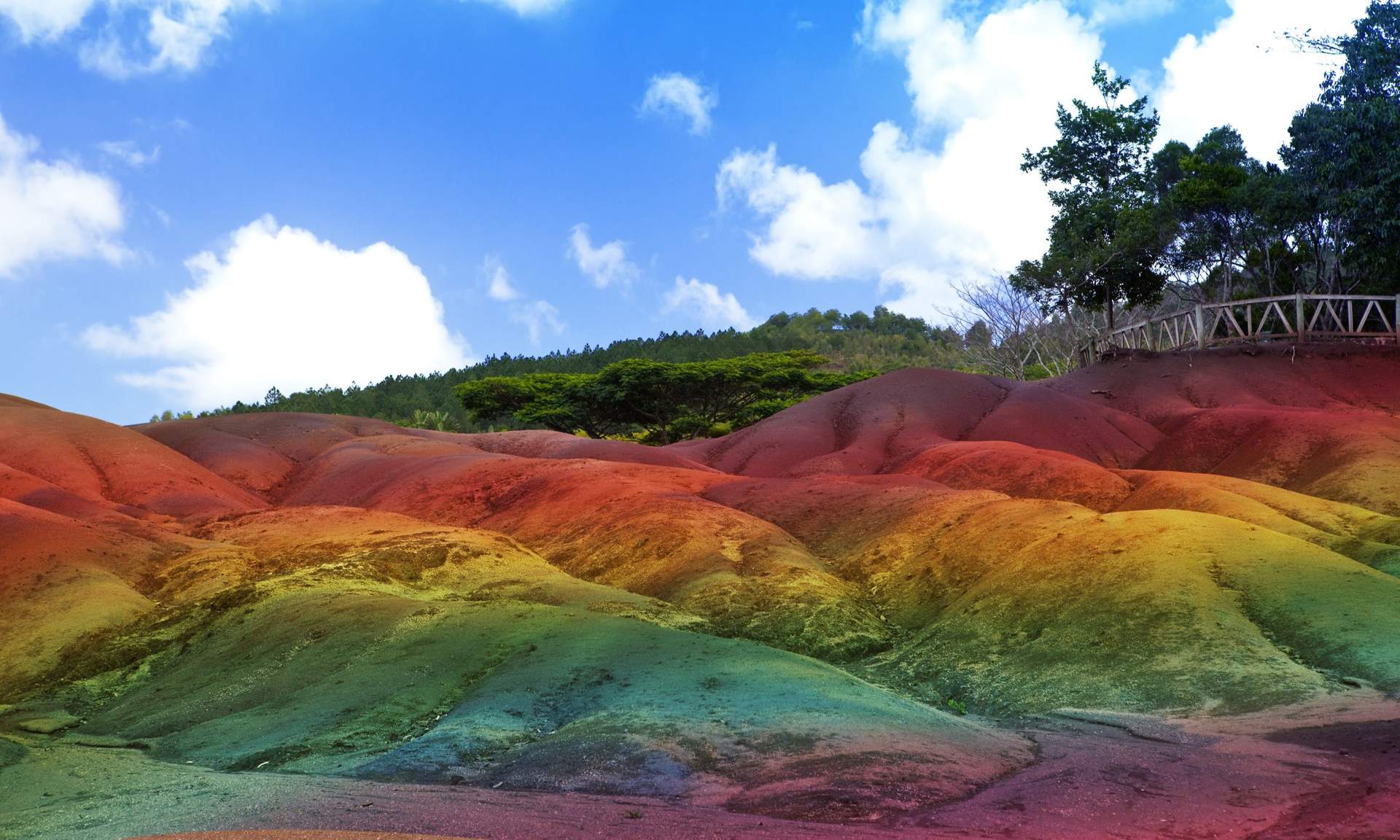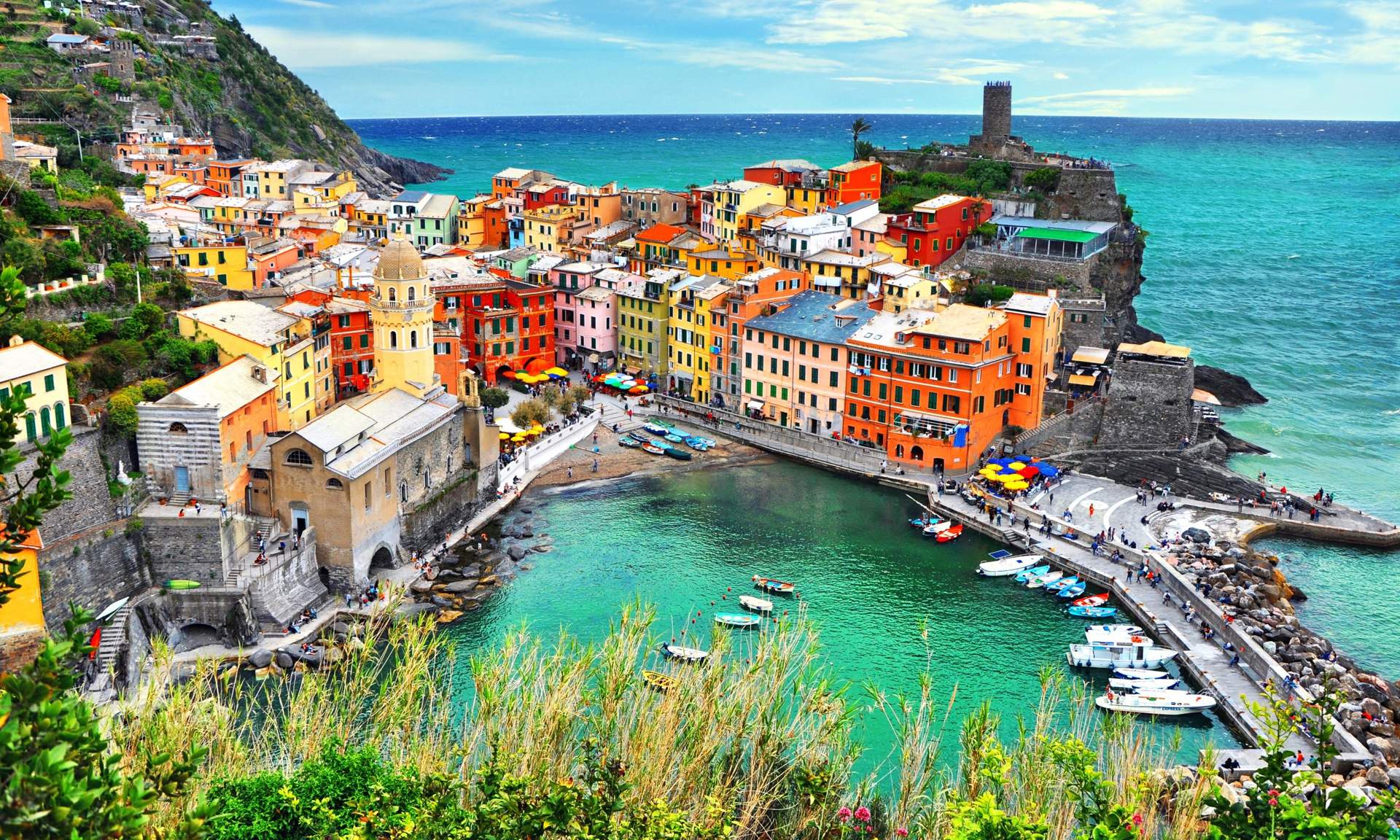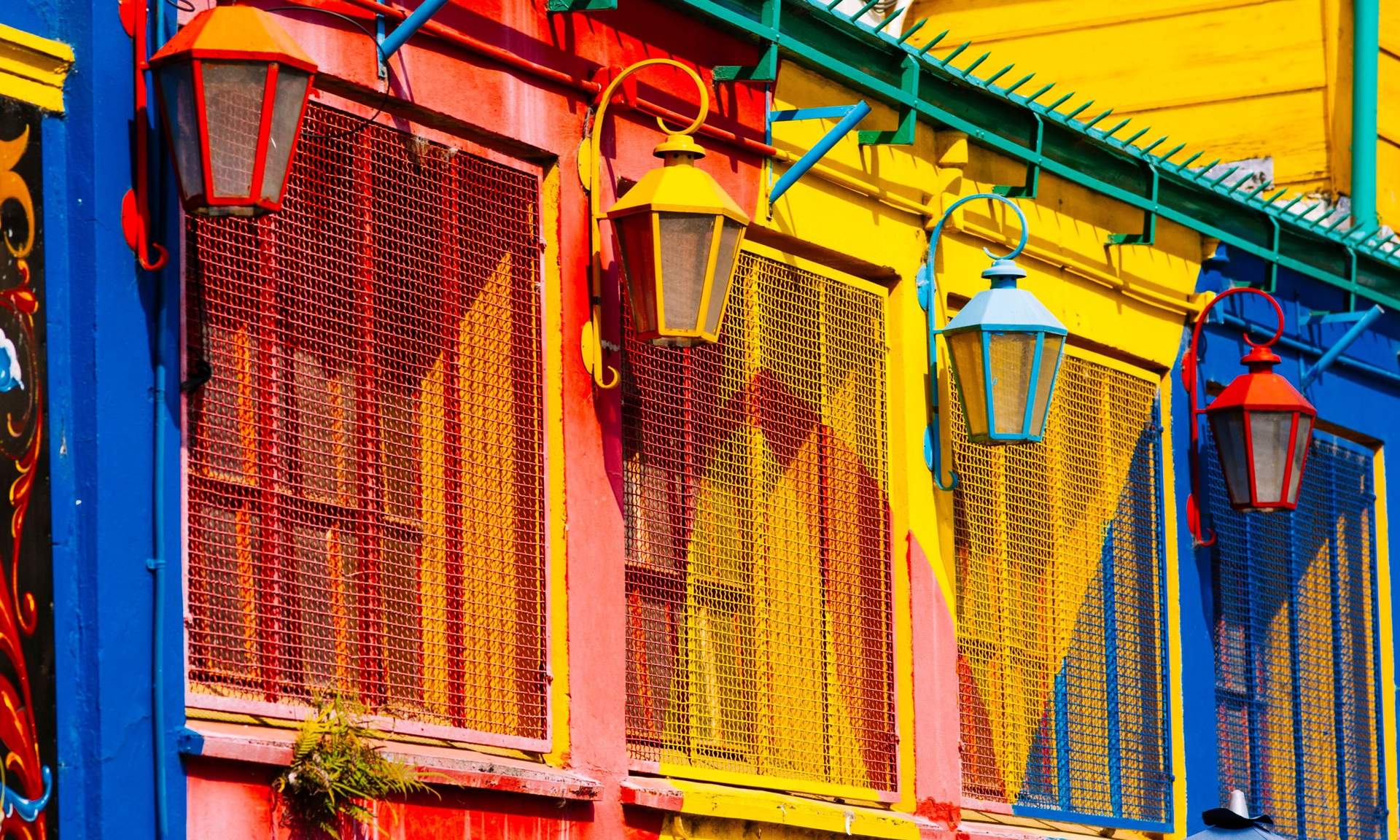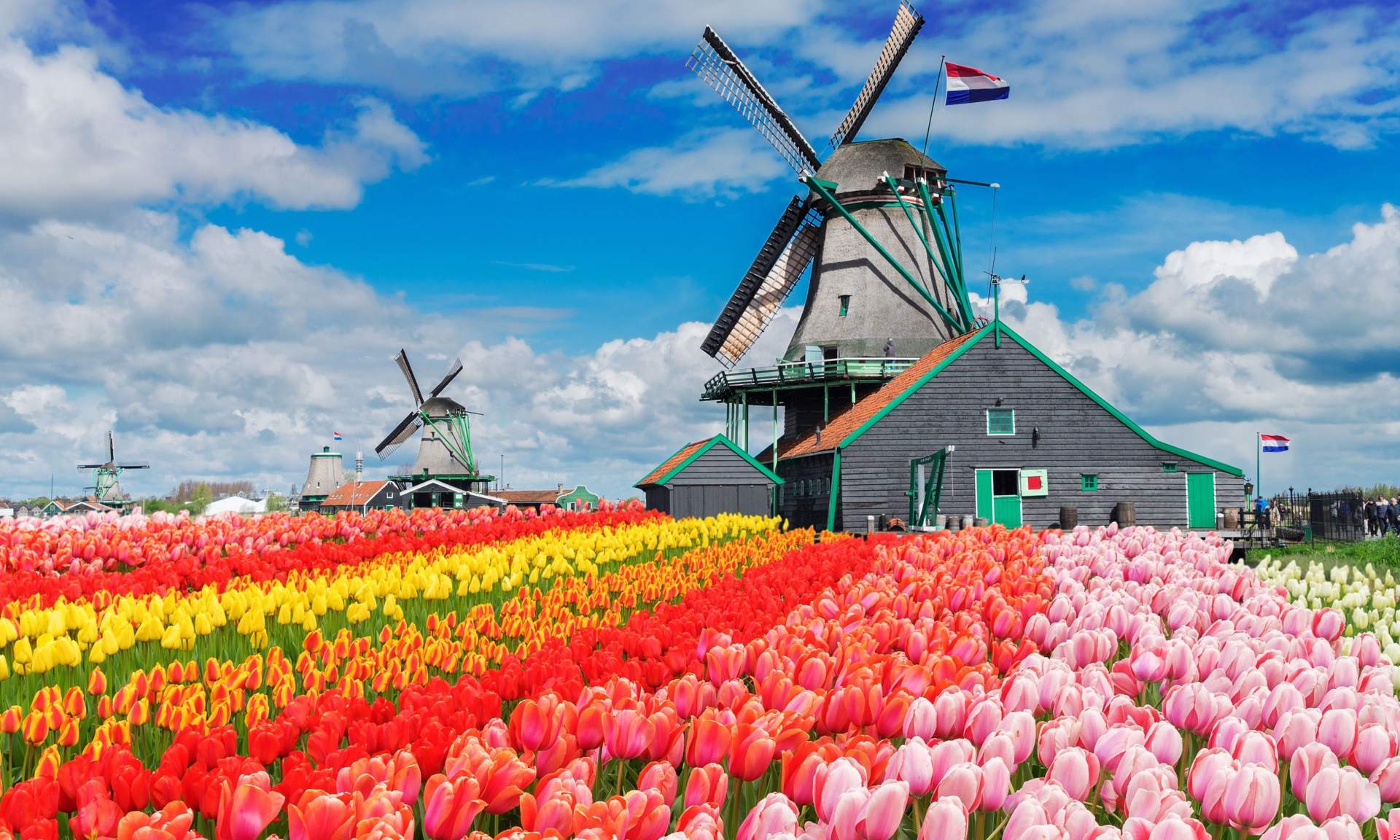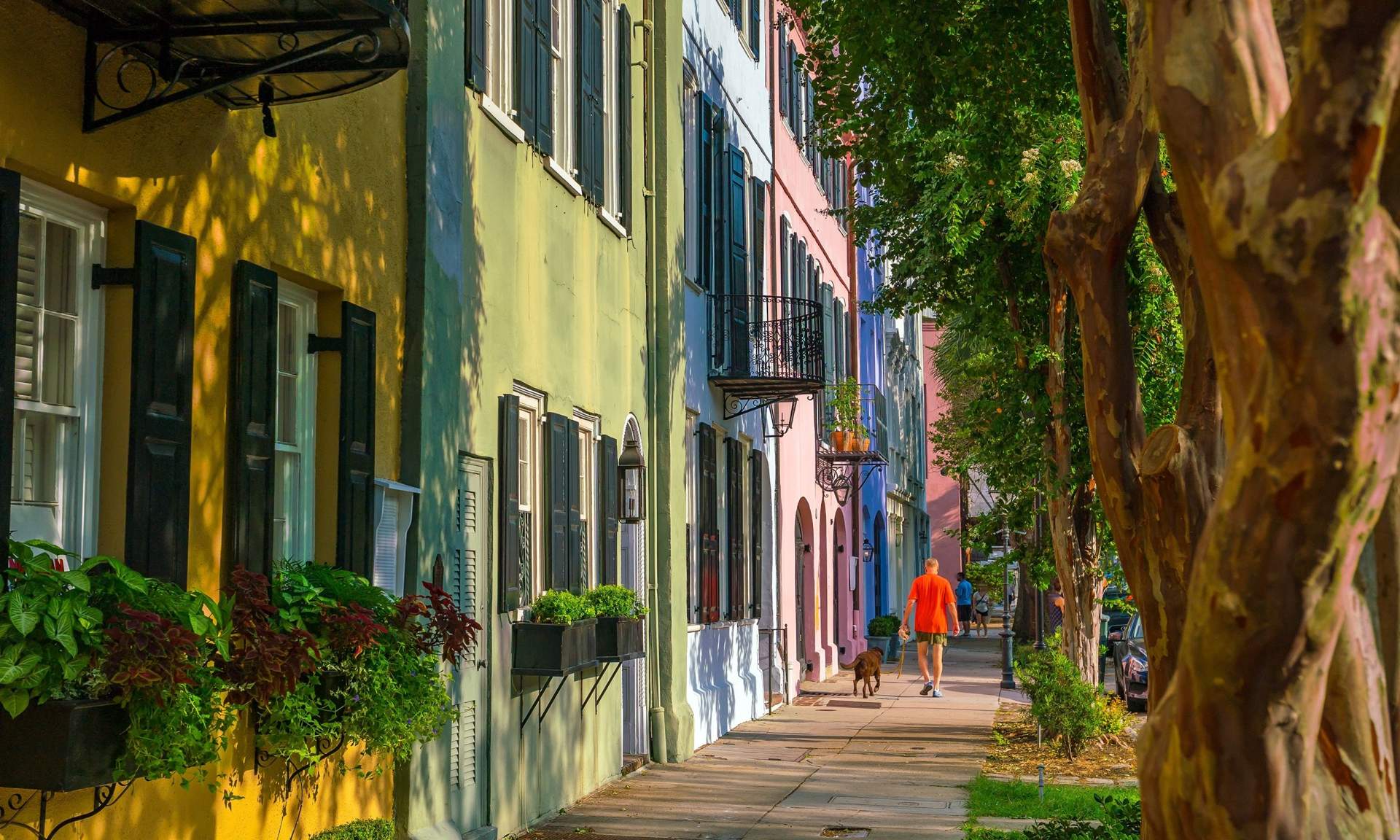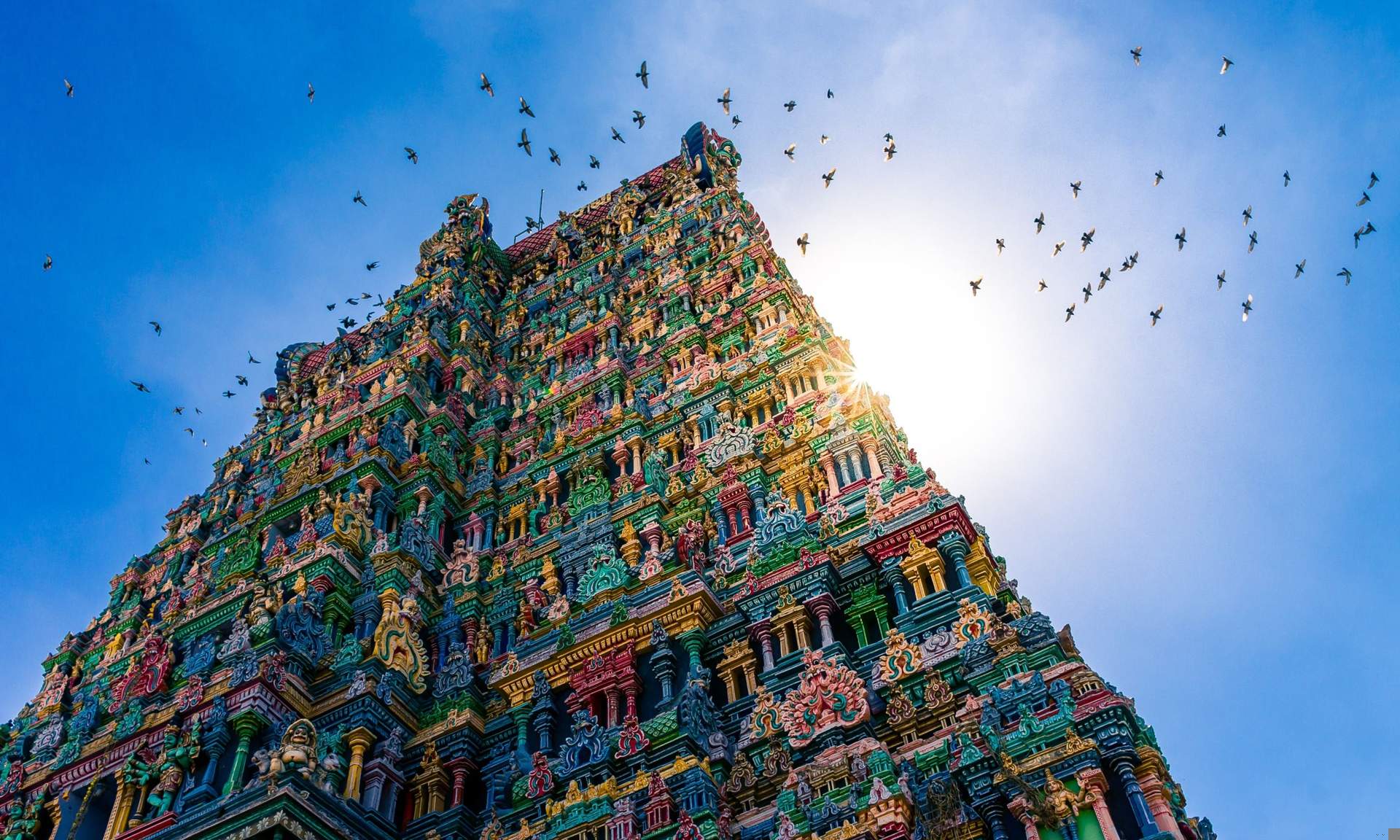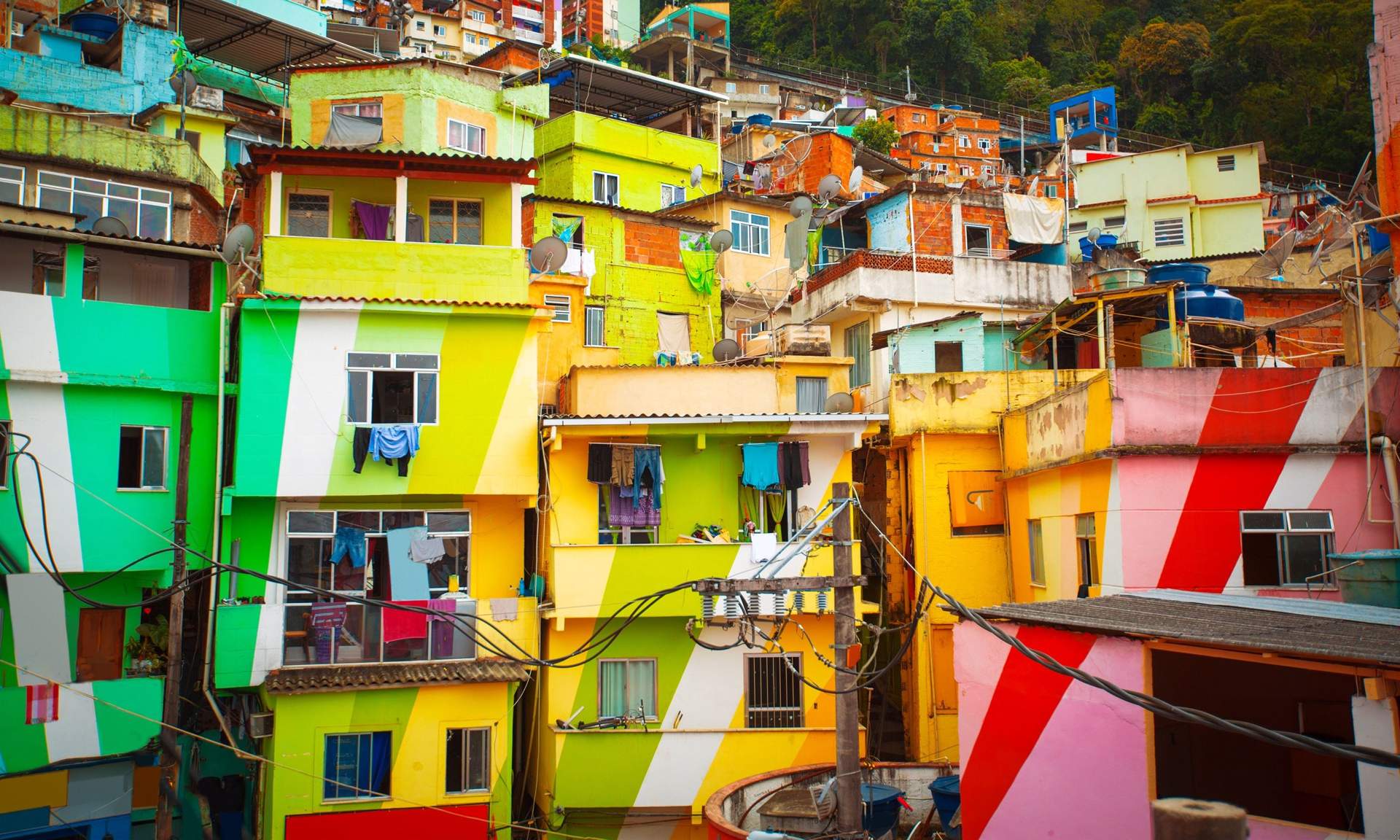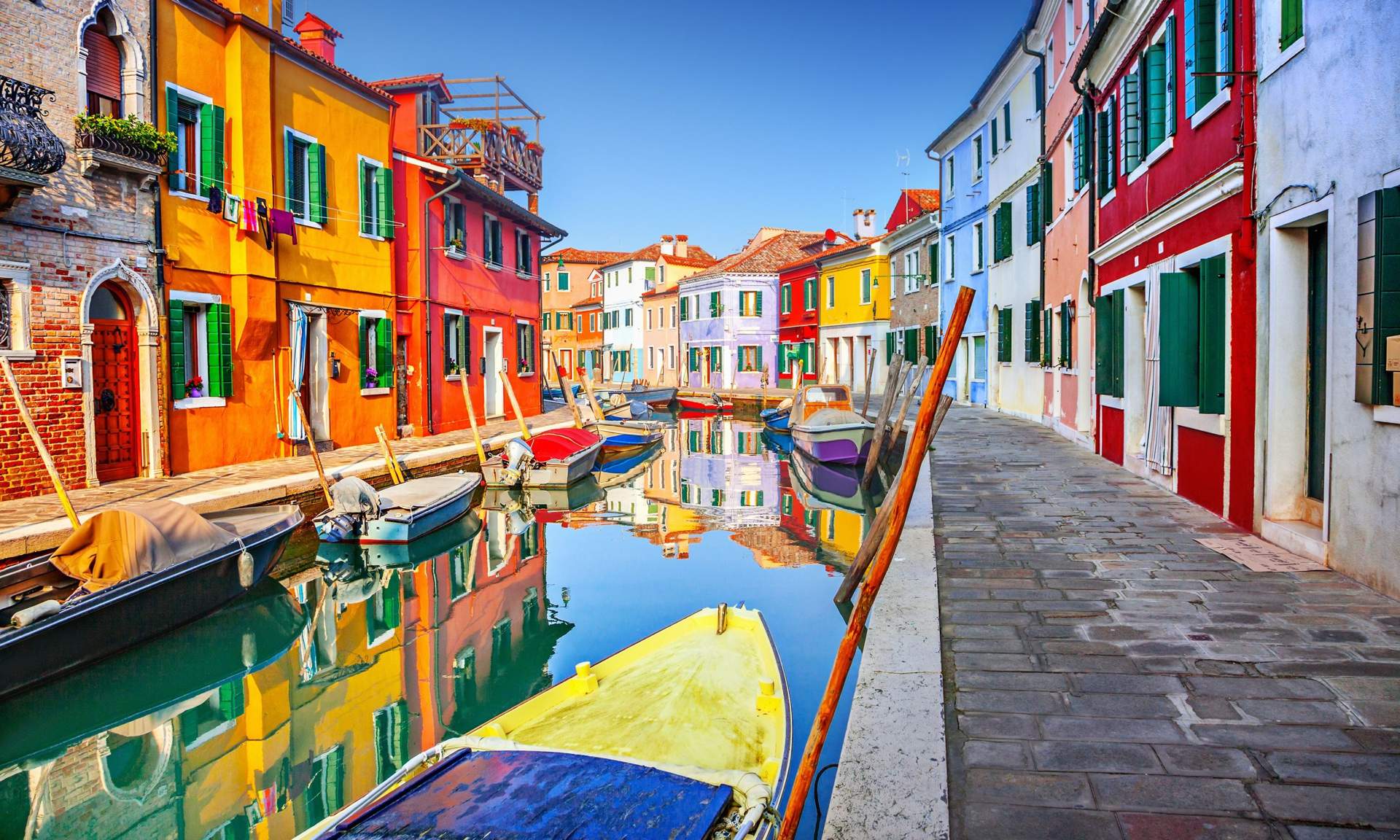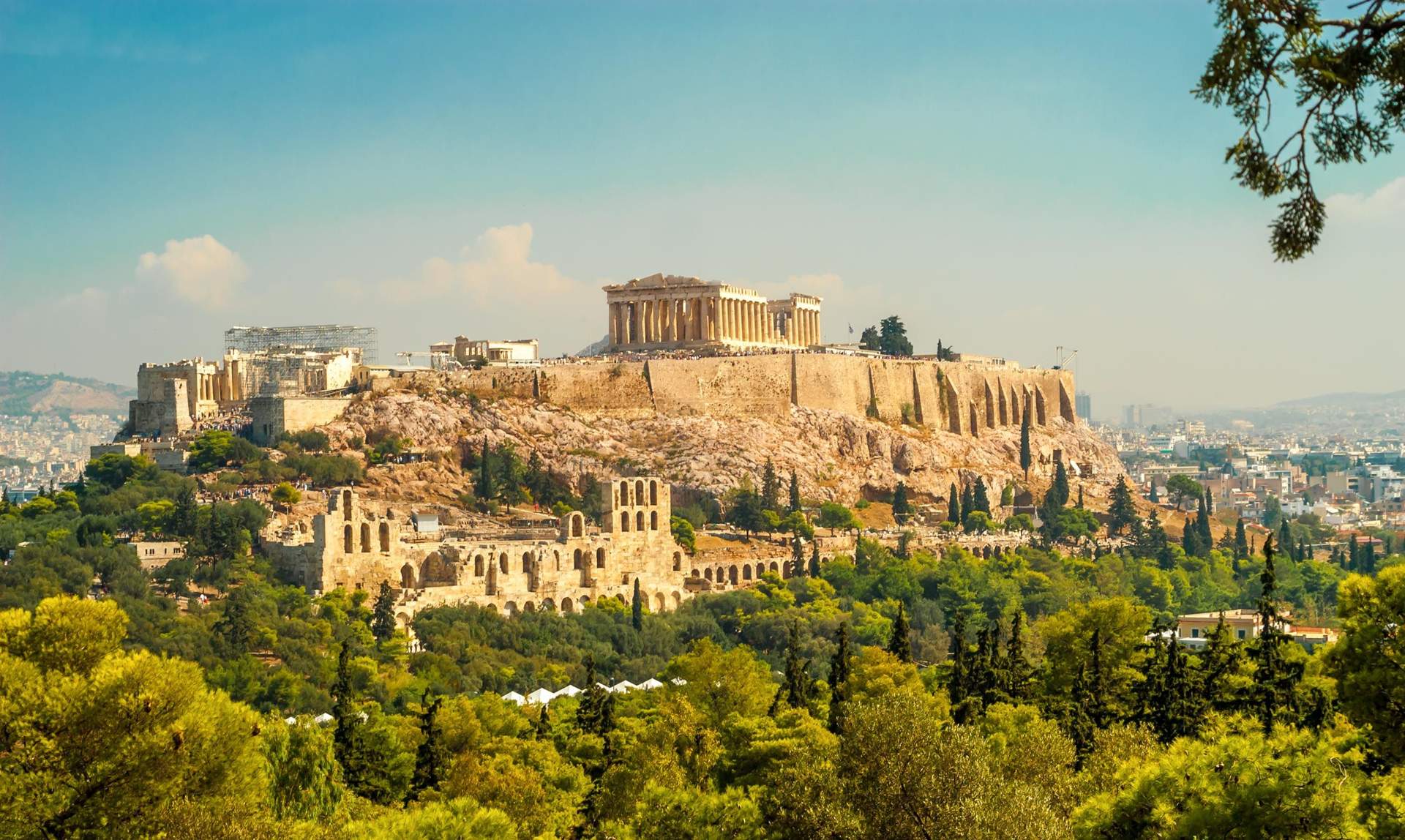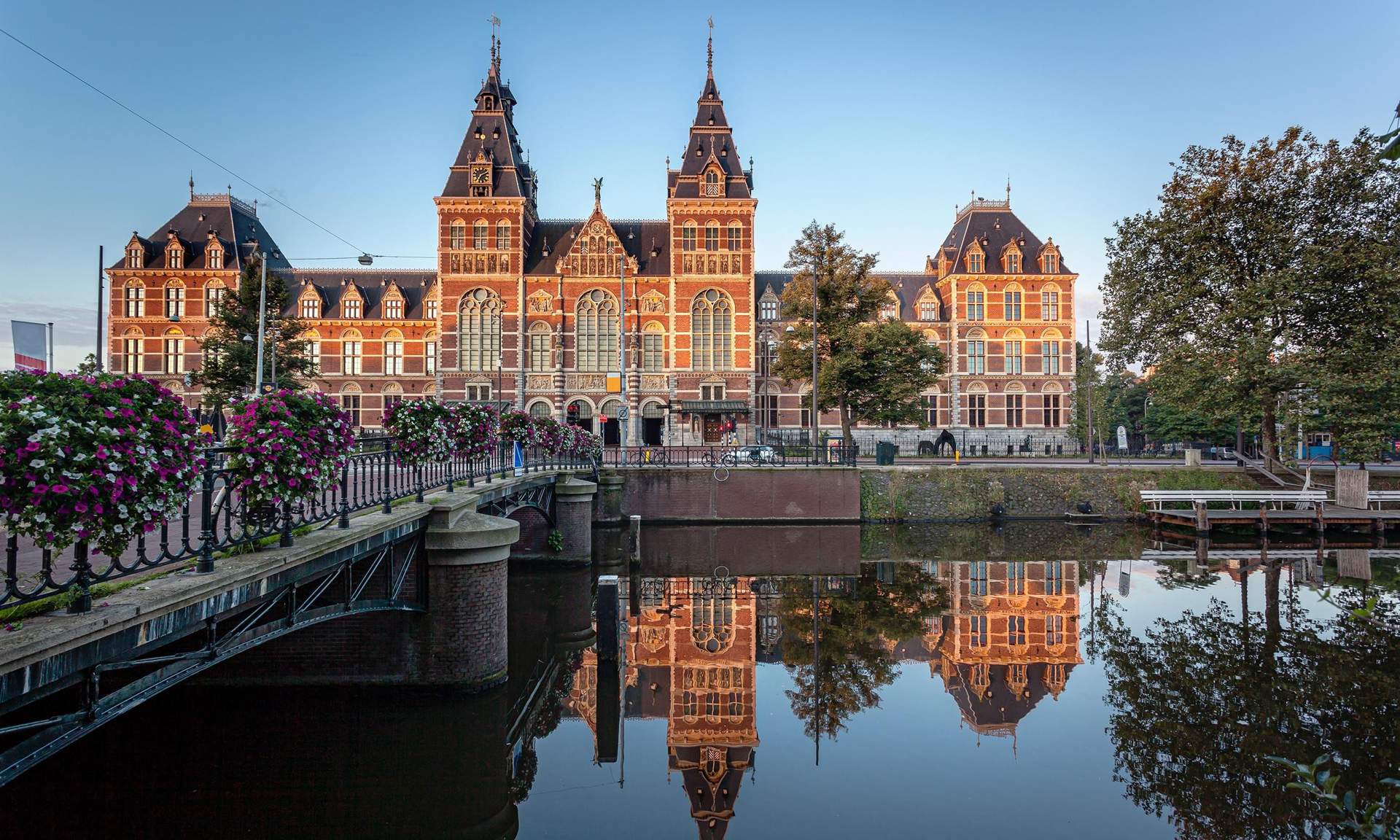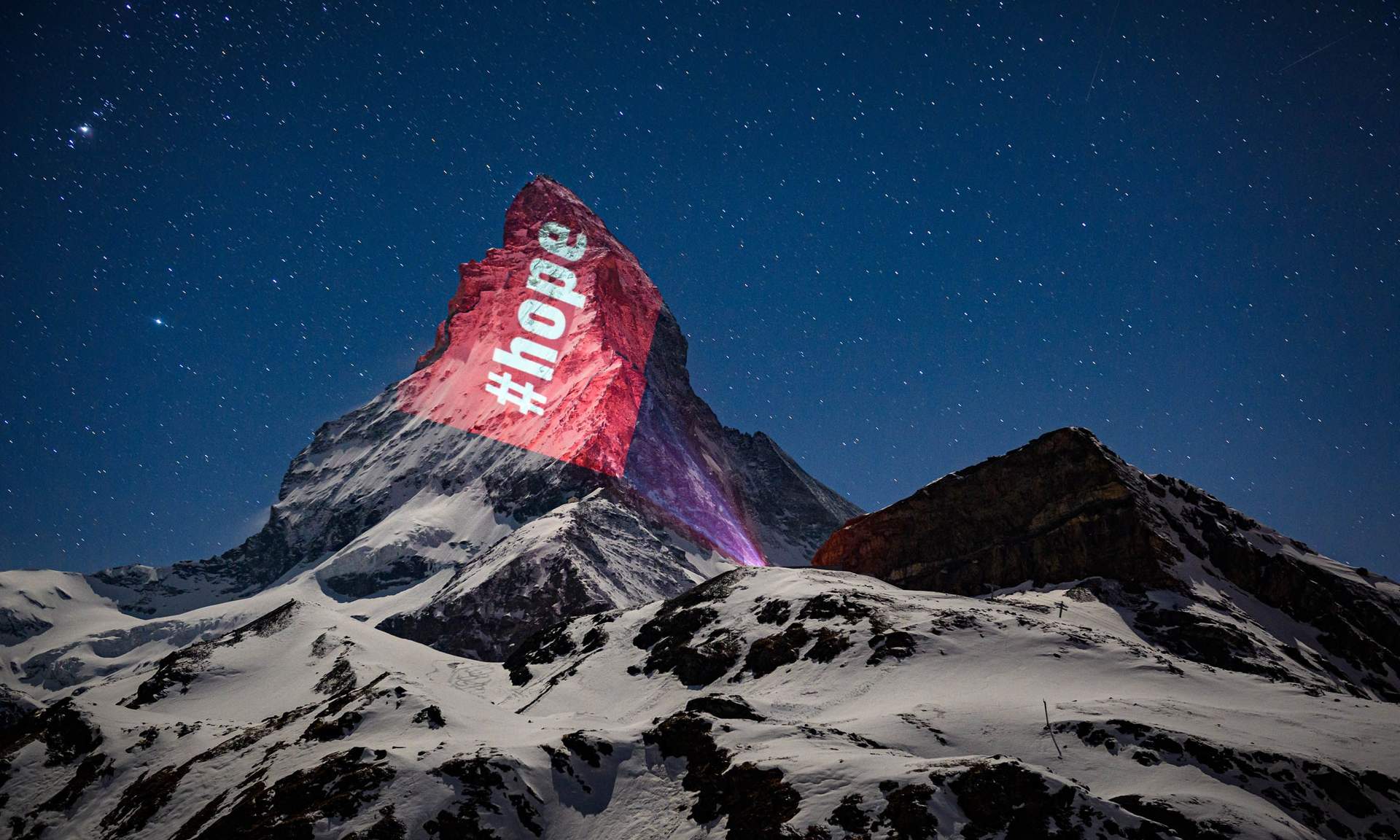Whether you prefer a casual stroll, a day-long hike or a week-long trek, there’s a walk on planet Earth for you. But how do you choose where to walk, when there are so many incredible walking routes around the globe?
There are the classics: Peru’s Inca Trail, Kilimanjaro in Tanzania and the famous Annapurna Circuit in Nepal. Then there are walks slightly more off-the-beaten-track: Mount Sinai in Egypt, the USA’s breathtaking Virgin Narrows, and Hong Kong’s refreshing Lantau Trail.
Discover the world’s top walking routes by region/continent using the links below, or keep scrolling to see the full list:
Here are 37 of the world’s best walks…
The best walks and walking routes in Latin America and the Caribbean
1. The Inca Trail, Peru
The iconic Machu Picchu, along the Inca Trail, Peru (Dreamstime)
Where?KM82 to Machu Picchu, southern Peru
Difficulty:Moderate to tough, with some high passes. Camping only.
Independent?No – a guide is mandatory.
The walk:This iconic tramp through the Andes is not all about arriving – though reaching the stone gate of Intipunku to see a misty sunrise over mountain-perched Machu Picchu is a fine finale.
The journey there is testing but manageable, weaving via old Inca pathways, orchid-filled cloud-forest and some lung-busting passes, including 4,200m ‘Dead Woman’s Pass’. There are also fascinating ruins en route, such as the clifftop guard-post at Sayacmarca and the sweeping terraces of Huinay Huayna.
Numbers on the trail are limited to 500 a day, including guides and porters, but camp stops (and their insalubrious loos) still get busy.
2. El Circuito, Chile
Pehoe Lake in Patagonia National Park, southern Chile (Shutterstock)
Where?Torres del Paine, Chile
Difficulty:Moderate to tough, with wilderness conditions. You’ll stay in refugiosor camping, where there are pricey supplies available.
The walk:It can be icy cold. It can be dripping wet. Winds can blast at over 100km an hour. But a circuit of Torres del Paine – taking in the Patagonian park’s gorgeous granite spires, creaking glaciers, mirror lakes and, possibly, pumas – is worth a bit of weather. The hiking isn’t too tough, and never exceeds 1,200m.
The challenge is being out in this wilderness for so long – if you’re trekking independently, that’s a lot of stuff to carry, though supported options ease the burden, leaving you freer to look out for llama-like guanaco, calving ice and those classic Cuernos del Paine views. Or try the W (60km; five to seven days), a shorter, only marginally less impressive version.
3. Inca Trail to Ingapirca, Ecaudor
Ingapirca, Ecuador (Shutterstock)
Where?Achupallas to Ingapirca, Ecuador
Difficulty:Moderate, walking up to 4,800m and involving wild camping.
The walk:Peru doesn’t have a monopoly on Inca trails – this trek follows part of the Latin civilisation’s Royal Road, which once linked Cusco and Quito; it ends at Ecuador’s own version of Machu Picchu: the castle-complex of Ingapirca.
The trail leads over the Andean páramo, with high-altitude views across glaciated mountains and shimmering lagoons. There are a few Inca ruins en route, but little else – just you, your muleteer (a recommended extra) and the history-soaked highlands.
4. Patí Valley, Brazil
Chapada Diamantina, Brazil (Shutterstock)
Where?Capão to Guiné, Chapada Diamantina, Brazil
Difficulty:Easy, with some steep sections. Keep in mind there are no facilities en route.
The walk:A contender for world’s best day walk? The route from Vale do Capão – a hip hangout foralternativos– to the village of Guiné packs in the best of the lush Chapada Diamantina.
Here, Jurassic-style tabletop mountains loom like those in a Conan Doyle novel. The vegetation is rampant, the waterfalls plentiful, the high-plateau views sweeping and other people scarce. There are some tests – Bumbreaker Hill is a bit of a slog – but there are also cold beers waiting at the end.
5. Waitukubuli National Trail, Dominica
Scotts Head fishing village, Dominica (Shutterstock)
Where?Scotts Head to Cabrits National Park, Dominica
Difficulty: Moderate, with a few easy sections, along with guesthouses and homestays en route.
The walk:The native Carib-Kalinago called Dominica ‘Waitukubuli’ (‘tall is her body’) after the island’s mountainous spine. Apt, then, that this coast-to-coast hike – the Caribbean’s first long-distance trail – bears that name, as it snakes across Dominica’s profusely green and volcanically craggy land.
Split into 14 accessible sections, ranging from seven km to 15km, you can thru-walk or pick stages: maybe the hike up Morne Crabier (section one), jaunts around high peaks and sulphurous pools (section four), or the beach traverse to Fort Shirley (section 14).
Expect sea breezes, mango trees and encounters with local Carib communities.
6. Nebaj to Todos Santos, Guatemala
Nebaj, Guatemala (Shutterstock)
Where?Cuchamatanes Mountains, north-west Guatemala
Difficulty:Moderate, with some tough climbs. It’s remote, but you will find a few homestays en route,
Independent?We wouldn’t recommend going without a guide.
The walk:Guatemala has many volcanoes to climb and lakes to amble around, but this hike across the remote Cuchamatanes is the top off-beat choice. Only four days long, it crosses three Mayan-language zones and reaches nearly 4,000m.
You’ll traverse flower-covered plains, pine forest and barren plateaus, while viewpoints might afford glimpses of peaks erupting in the distance. Staying in homestays offers insight into local culture, too.
7. The Silver Trail, Mexico
Copper Canyon, Mexico (Shutterstock)
Where?Carachic to Batopilas, Copper Canyon, Mexico
Difficulty:Moderate-to-tough, with some scree sections. Expect it to be hot, and you’ll need to camp throughout.
Independent?Not recommended
The walk:In the 18th century, the Spanish forged a trail to access their silver mines, located deep in the Batopilas Canyon. Today that remote path is used only by local Tarahumara Indians (famed for their long-distance running prowess), a few plucky trekkers and their load-bearing burros.
This is frontier territory, hiking via scree slopes, forested passes, cool pools and caves; there’s also the possibility of meeting Tarahumara farmers en route.
The best walks and walking routes in Africa
8. Tsitsikamma Trail, South Africa
Bridges in Tsitsikamma National Park, South Africa
Where?Eastern Cape, South Africa
Difficulty:Moderate, with some tough bits. Accommodation includes huts with flush loos and showers.
Independent?Yes, though huts must be pre-booked.
The walk:South Africa’s first official hiking trail is a treat. The route, through gorges, fynbos and the Tsitsikamma Mountains, is testing, but each night ends in an equipped hut, while a porterage service can lighten your load.
Highlights include ocean views from Nature’s Valley, gazing into Bloukrans River Gorge and wildlife from bulbuls and goshawks to even leopards.
Learn more:Wanderlust’seditor-in-chief Lyn Hughesexplores the twisting woodland paths, mountains, wildlife reserves and wild coastline of South Africa’s Eastern Cape.
9. Mount Kilimanjaro, Tanzania
The highest peak of Mount Kilimanjaro, Tanzania (Shutterstock)
Difficulty:Tough, due to high altitude. You’ll need to camp throughout the trek, with huts available on one of the routes.
Independent?No – a guide is compulsory.
The walk:Stand on the roof of Africa! As the continent’s highest peak (5,895m), and the world’s highest trekking summit, it’s a magnet for challenge-seekers.
There are six routes: Machame (49km) is tough but dramatic; quieter Rongai (65km) allows for more acclimatisation and has a high success rate. Whichever you pick, altitude is the biggest concern, and sweat, tears, carbs and camaraderie are guaranteed..
10. The Toubkal Circuit, Morocco
The Atlas Mountains and Berber villages in Toubkal National Park, Morocco (Shutterstock)
Where?Atlas Mountains, Morocco
Difficulty:Moderate, with some tough sections. Camping available, and gîtes available in nearby villages.
Independent?Possible, though we highly recommend a guide.
The walk:The summit of North Africa’s highest peak is a relatively simple hike up from the Neltner Refuge. But much better to spend several days circuiting 4,167m Jebel Toubkal than to rush it.
The surrounding High Atlas terrain is a mix of verdant valleys, Berber villages and stark mountainsides; some days include testing passes, but frequent stops to sip mint tea in the shade relieves the strain.
11. Simien Mountains Traverse, Ethiopia
Baboons sitting high in the Simien Mountains, Ethiopia (Shutterstock)
Difficulty:Moderate to tough. You’ll have to camp during the trek.
Independent?No. Trails are not clearly marked, so go with a guide.
The walk:Trekking in Ethiopia’s World Heritage-listed highlands might yield sightings of gelada baboons, walia ibex, possibly even a rare Simien fox – but few other trekkers.
This is African hiking, across rugged volcanic escarpments seemingly untouched by time. Routes vary, but often include a summit attempt on Ras Dashen (4,620m), the country’s highest peak, and stops at village mud-huts to drink coffee like a local.
The best walks and walking routes in Europe
12. Sentiero degli Dei, Italy
Where?Bomerano-Positano, Amalfi Coast, Italy
Difficulty:Mostly easy, and it’s a short walk.
Independent?Yes, this one’s great for independent travellers.
The walk:The Path of the Gods traces one of the Amalfi Coast’s most handsome sections. Following old mule trails, it skirts vineyards and rolls over valleysides cloaked in holm oak and heather, offering views down the cliffs to the Med beyond.
The ‘alto’ route has most drama; a lower route can be shortened at tiny Nocelle (perched 440m-up) by catching the bus to pretty Positano below.
13. Tour du Mont Blanc, France, Switzerland & Italy
Where?France, Switzerland & Italy
Difficulty:Moderate to tough, with plentiful refuges and villages accessible from several points.
Independent?Yes, but there are many excellent guided trips available.
The walk:No need to haul yourself up 4,810m Mont Blanc – arguably, the best way to experience Western Europe’s highest peak is to walk in its shadow on this classic trail that nips into three nations and brims with Alpine charm and history.
It’s also high on creature comforts, dotted with refuges (providing hot, home-cooked meals) so you don’t have to carry camping kit. There are stiff climbs, some steep ladders and snow is always possible, but plentiful accommodation choices mean you can tackle it at your own pace.
14. Camino de Santiago, France & Spain
Sign for the Camino de Santiago (Shutterstock)
Where?St Jean Pied de Port- to Santiago de Compostela, France/Spain
Difficulty: Long but moderate if paced, with albergues and villages to stop over in.
The walk:The Camino isn’t a walk, it’s a state of mind. Some see it as a spiritual undertaking, others as a physical test; for some it’s all about the camaraderie at the albergues (pilgrim hostels).
Whether you’re there for the highlights of northern Spain – León’s cathedral, delicious grilled octopus – or some higher goal, there’s nothing else quite like it.
15. Laugavegur, Iceland
Multi-coloured Landmannalaugar in summer (Shutterstock)
Where?Landmannalaugar to Thórsmörk, Iceland
Difficulty: Moderate, though very weather dependent. There are six huts en route, with dorms, tent pitches, toilets, showers but no food.
Independent?It is possible, but we’d recommend you hire a guide.
The walk:Iceland’s most iconic walk is a rainbow-coloured romp through some of the country’s best bits. Peaks come in reds, yellows, greens and purples; blinding-white glaciers creak, hot springs burble, lakes and rivers glitter.
The trekking season is short (mid-June to early September), so the trail can get busy, but the wonderful weirdness of Iceland’s geothermal geography is more than compensation.
16. Lycian Way, Turkey
The Lycian Way, Turkey (Shutterstock)
Where?Fethiye to Antalya, Turkey
Difficulty:Moderate to tough. There are a few easy sections, with camping and village houses en route.
Independent?Yes. There are plenty of guided trips available, too.
The walk:The Lycian Way, Turkey’s first long-distance trail, flanks the hilly coast of the Tekke Peninsula. It’s rich in history – dotted with Byzantine monasteries, Greek temples and Roman ruins.
It’s riddled with coves, caves and brilliant beaches; and it’s infused with the scent of wild strawberries, juniper and pine. Camping is possible, but best is to stay in guesthouses, to meet the locals who call this handsome coastline home.
17. Faulhornweg, Switzerland
Schynige Platte, Switzerland (Shutterstock)
Where?Schynige Platte to First, Switzerland
Difficulty: Moderate but short, with huts en route and trains/cable cars at each end.
The walk:This well-marked route is potted Swiss perfection. Accessed by 19th-century cog railway from Wilderswil, it offers views over blue-turquoise lakes Thun and Brienz to one side, the amassed peaks of the Bernese Oberland on the other.
Green, curving valleys, dramatic ridge walking, a 2,680m-high mountain lodge (a good refreshment stop) and mirror lakes are added extras. A scenic cablecar from First to Grindelwald even saves the walk back down to the valley floor.
18. West Highland Way, Scotland
Stunning views from the West Highland Way, Scotland (Shutterstock)
Where?Milngavie to Fort William, Scotland
Difficulty:Moderate, though it’s weather dependent. Camping, bothies, hostels and B&Bs available en route.
Independent?Yes, but there are many excellent guided trips on offer.
The walk:From just outside Glasgow to the UK’s highest peak, the West Highland Way is the perfect Scottish primer.
Utilising many old pathways – from drovers’ roads to disused railway lines – it crosses pastoral lowlands, skirts Loch Lomond and negotiates bleakly beautiful Rannoch Moor before delving into great glens and finishing beneath 1,344m Ben Nevis – a summit of which provides the ultimate finale.
The best walks and walking routes in North America
19. West Coast Trail, Canada
A view of Vancouver Island, Canada (Shutterstock)
Where?Pachena Bay to Gordon River, Vancouver Island, Canada
Difficulty:Tough, with tidal/river crossings. You’ll be wild camping, with no shelters or facilities.
Independent?Yes – but permits and proper bookings are essential.
The walk:Don’t underestimate the WCT: it might be in lovely, well-developed Canada, but it’s a wild prospect. Along its glorious Pacific-battered route, there are no settlements, ferry ports, shelters or shops – you must be entirely self-sufficient.
There are also rivers to ford, gullies to cross, ladders to climb, bears to avoid and inclement weather to contend with. But the rewards are many: this is North America at its most pristine, where the trail runs via old-growth forest, untouched beaches, caves, coves, cliffs and incredible sunsets. Watch out for whales, sea lions and wolves, too.
20. The Appalachian Trail, USA
A sign marking the Appalachian Trail, USA (Shutterstock)
Where?Springer Mountain, GA to Mount Katahdin, ME, USA
Difficulty:It varies – there’s a challenging thru-hike, but some easy sections. It’s a long trek, with camping and basic shelters en route. You will have intermittent access to hotels, too.
The walk:First, some stats: the Appalachian Trail passes through 14 states; its total elevation gain equals 16 Mount Everests; around 2,000 people try to thru-hike the whole lot each year – one in four succeeds.
Luckily, it’s easy to simply sample this back-country behemoth –Appalachian Trailoffers suggestions, from easy two-milers to multi-day trips. In general, Maryland and West Virginia offer the gentlest hikes; New Hampshire and Maine the toughest.
21. John Muir Trail, USA
A stunning lake in Yosemite National Park, USA (Shutterstock)
Where?Yosemite Valley to Mount Whitney, California, USA
Difficulty: Moderate to tough; camping. It’s long, and self-sufficiency is required.
Independent?Possible, but advance booking and permits are required
The walk:It’s fitting that the man who spearheaded the national parks movement should have such a world-class wilderness-traversing trail named after him.
Muir loved Yosemite, where this backcountry adventure starts; the route then wends further into the Sierra Nevada, where highlights include meadows strewn with wildflowers, remote Evolution Lake and the pretty pools at Rae.
En route there are a few re-supply stops (including the hot springs at Red’s Meadows Resort), but mostly it’s just you, the mountains and the bears.
22. Virgin Narrows, USA
The ultimate wet-n-wild trek through the Virgin Narrows, USA (Shutterstock)
Where?Chamberlain’s Ranch to the Temple of Sinawava, Zion NP, Utah, USA
Difficulty:Moderate but short, and involves camping. All waste must be packed out.
Independent?Possible, but guide recommended and permits required
The walk:Breathe in for this squeeze down one of southwest USA’s most dramatic slot canyons. This is Indiana Jones-style stuff: sheer, twisting sandstone walls tufted by hanging gardens soar up from the boulder-strewn riverbed – which forms your wet-n-wild walking trail through Zion’s canyons.
Good water-shoes and neoprene socks are essential; you may need to swim short sections. But keep an eye on the weather before you start as flash floods are lethal here. Go with a guide for the safest trip.
23. Berg Lake Trail, Canada
The entrance to Mount Robson Park, Canada (Shutterstock)
Where?Mount Robson, British Columbia, Canada
Difficulty:Moderate but short, though there are campsites with bear lockers and pit toilets.
The walk:This out-and-back hike towards the Canadian Rockies’ highest peak (3,954m Mount Robson) is a stunner: gaining nearly 800m in 23km, it traverses the Valley of a Thousand Falls – via reflective pools, suspension bridges and squeaking marmots – to Berg Lake, where ice-chunks from massive Berg Glacier calve into the aquamarine water.
Doable as a long day-hike, there are campgrounds en route for those who want to linger; for even better hiking, use the camp at the lake as a base for forays into the surrounding wilds.
The best walks and walking routes in the Middle East
24. Dana to Petra, Jordan
Petra, Jordan (Shutterstock)
Difficulty:Moderate to tough. You’ll have to camp, and its a wild terrain.
Independent?No – a guide is compulsory.
The walk:The ‘Inca Trail of the Middle East’ wends from the wildlife-filled forests of Dana Nature Reserve to the rock-hewn ‘lost’ city of Petra, with some truly intoxicating desert in between.
It’s not waymarked – this is a directional route along a range of old mule tracks, rather than a set path, hence the need for a guide. But it’s full of atmosphere and drama: rolling hills, scorching wadis, rich sandstone mountains, Bedouin-style camping and access to Petra via its little-known back door.
25. Mount Sinai, Egypt
Mount Sinai, Egypt (Shutterstock)
Difficulty:Moderate, with camps and guesthouses en route.
Independent?No – many trails are not clearly marked.
The walk:Many a traveller hauls themselves up 2,285m Mount Sinai for sunrise, a two-to-three-hour hike in the dark from St Catherine’s Monastery. However, the entire peninsula is scored with old pilgrim paths and mule tracks that could occupy several days.
You can summit Mount Saint Catherine (2,641m), Sinai’s highest peak; hike into El Shegg Gorge to bathe in nearby pools; or climb to the ruined Ottoman castle on Mount Abbas Pasha. Throughout, the desert terrain is wild, and rich in biblical and Bedouin intrigue.
The best walks and walking routes in Australasia
26. Milford Track, New Zealand
Milford Sound, New Zealand (Shutterstock)
Where?Lake Te Anau to Milford Sound, South Island, New Zealand
Difficulty: Moderate. There are huts with bunks, cookers and flush loos along the route.
Independent?Yes, but reservations are still required.
The walk:Awesome and oh-so popular – the toughest thing about this four-day Fiordland tramp (aside from scaling 1,154m Mackinnon Pass) is booking a place on it.
Only 40 independent walkers a day are permitted to hit the trail, which passes mossy rainforest, tumbling falls and high peaks en route to marvellous Milford Sound. Book ahead, pack all your supplies and prepare to be rained on and blown away.
27. Overland Track, Australia
Lake St Clair, Australia (Shutterstock)
Where?Ronny Creek to Lake St Clair, Tasmania, Australia
Difficulty:Moderate. Expect basic huts and tent platforms
Independent?Yes. Guided options are available (including a ‘posh’ version using private huts)
The walk:Starting from Cradle Mountain and passing wizened rainforest, glacier-gouged valleys, towering eucalyptus and golden moorland, this classic sums up the Tassie wilderness.
As well as the standard 65km, there are side-trips to waterfalls and lookouts. At Lake Sinclair, finish with a ferry ride, or extend your trip by walking an extra 17.5km around its shore.
28. Tongariro Alpine Crossing, New Zealand
Hikers explore Tongariro National Park, New Zealand (Shutterstock)
Where?Tongariro National Park, North Island, New Zealand
Difficulty:Easy to medium, with steep sections. It’s a short walk, but there are no facilities.
The walk:Often touted asthe world’s best day walk, this yomp across eerie Tongariro is a magical mix of sulphurous pools, red craters, totara trees, Maori legend and – since the Lord of the Rings movies – Mount Doom.
There are some significant ups, but it’s a straightforward undertaking (unless the weather comes in). To add extra interest – and lose the crowds – spend three days completing the 34km hut-to-hut Northern Circuit: the Crossing, supersized.
29. Larapinta Trail, Australia
Outback landscape along the Larapinta Trail, Australia (Shutterstock)
Where?Alice Springs to Mount Sonder, NT, Australia
Difficulty:Tough, though some stages are easier. Camping involved, self-sufficiency required.
Independent?Yes, but guided options are available (including a ‘posh’ version using semi-permanent camps).
The walk:Australia has many trails but this is perhaps the most quintessentially ‘Oz’: starting from the Red Centre capital of Alice, it goes bush along the spine of the West MacDonnell Ranges, incorporating red rocks and desert, deep gorges, cooling creeks, termite mounds and star-filled skies.
The climax is Alamy a climb of 1,380m Mount Sonder for a panoramic overview. It’s broken into 12 sections, and each trailhead is vehicle-accessible making short forays easy to arrange. Only the fit and well-prepared should attempt the lot alone.
30. Kokoda Track, Papua New Guinea
The Kokoda Track, Papua New Guinea (Shutterstock)
Where?Owers Corner to Kokoda, Papua New Guinea
Difficulty:Tough, but humid with jungle camps, homestays, and villages en route.
Independent?No – guide and permit required
The walk:In 1942, this jungle trail was the site of fierce fighting between Japanese and Australian troops; today it’s filled with hikers battling humidity, bugs and torrential rain.
This isn’t a comfortable undertaking, involving steep, slippery ascents, raging rivers and sticky conditions, but pay-offs include fascinating Second World War history, tribal encounters and Technicolor birds of paradise.
The best walks and walking routes in Asia
31. Great Himalaya Trail, Nepal
Kanchenjunga Base Camp, Nepal (Shutterstock)
Where?Near Kanchenjunga Base Camp to Hilsa on the Tibetan border, Nepal
Difficulty:Challenging, and long. You’ll be camping for a while, too.
Independent?No, you’ll definitely need to hire a guide.
The walk:First thing first: don’t panic! This mammoth hike across the Nepalese Himalaya is formed of 10 connecting sections (two to three weeks each), so the less gung-ho can still have a go at a bit of it.
Also, there’s a ‘cultural’ version (1,500km), which uses gentler, lower altitude trails, and where small guesthouses offer a warm namaste each night. For planning info, seeThe Great Himalaya Trail.
32. The Great Wall, China
The Great Wall of China (Shutterstock)
Where?North of Beijing, China
Length:5,000km in total; various short sections possible
Days:One to12 (a section)
Difficulty: Easy to moderate with steep, uneven sections. Homestays available.
Independent?Yes, many guided options available
The walk:It’s tough to walk the entire Great Wall – not just because it’s a really long way but, in places, its route is ill-defined.
However, stringing together a series of day-hikes in the Beijing region – around the less touristy areas of Jiankou, Mutianyu, Gubeikou and Jinshanling – is a good alternative, combining watchtowers, vertiginous steps and mountain views.
33. Chomolhari Trek, Bhutan
Taktsang Monastery in the Paro Valley, Bhutan (Shutterstock)
Where?Paro to Dodena, Bhutan
Difficulty: Fairly tough, involving high altitudes, and camping with no facilities en route.
Independent?No – you’ll definitely need a guide.
The walk:This exclusive yet manageable Himalayan adventure is a Bhutanese classic. Join yak herders – but few hikers – walking in the shadow of 7,326m Chomolhari (Jomolhari).
The trail leads past colourfuldzongs(monasteries) and thick forest, over lofty passes (topping out at 4,900m Nyile La) and maybe even past the footprints of rare snow leopards.
34. Mount Kailash Circuit, Tibet
Mount Kailash, Tibet (Shutterstock)
Difficulty:Moderate to tough. It’s remote, with monasteries and camping.
Independent?No – permits/guides are necessary.
Thewalk:A circumambulation of Kailash won’t just test your legs, it will sort your karma: Buddhists, Böns, Hindus and Jains all believe that a lifetime’s sins can be expunged by completing a circuit (kora) of the unmistakable 6,714m mountain.
Kailash is in a remote spot – just getting there (via sacred Lake Manasarovar) is an adventure. On trek, you’ll crest a 5,600m pass, visit monasteries and meet the Tibetan pilgrims who are walking for their souls.
35. Lantau Trail, Hong Kong
The Wisdom Trail on Lantau Island, Hong Kong (Shutterstock)
Difficulty:Mostly easy, with a few tougher sections. Facilities are great.
The walk:Only a short train or ferry hop from the hubbub of Hong Kong Island, this circular trail on nearby Lantau is a breath of bucolic air.
Starting or finishing at Mui Wo, the route feels far from the metropolis, taking in temples, beaches, fishing villages and gardens. Divided into 12 sections, it’s easy to pick and chose a suitable section.
36. Singalila Ridge, India
A campsite in Singalila National Park, India (Shutterstock)
Where?Manebhanjan to Rimbik, Sikkim, India
Difficulty:Moderate. Teahouses en route.
Independent?Possible, but guide definitely recommended.
The walk:From Sandakphu, the 3,636m zenith of this route near the tea terraces of Darjeeling, you can look out over the world’s highest peaks: Kangchenjunga, Lhotse, Everest.
As you trek between teahouses, you’ll stop en route to admire Hindu temples, prayer wheels and red pandas. Each night, curries, Sikkimese beers and warm welcomes await.
37. Annapurna Circuit, Nepal
Annapurna Circuit, Nepal (Shutterstock)
Where?Besisahar to Naya Pul, Nepal
Difficulty:Moderate to tough. Teahouses en route.
Independent?Possible, but local guides/sherpas recommended
The walk:Although it weaves amid remote, spectacular mountains, this is no wilderness adventure. Dubbed the ‘teahouse trek’, you’ll interact and stay with the varied ethnic groups that live here.
As well as high passes (peaking at 5,416m Thorong La), lonely stupas, lush paddies and barren moonscapes, there are yak herders, reviving hot springs and guesthouses serving curry and cake. Options abound too: cut the trek in half by flying into/out of midway Jomsom. Or take alternative side trails to avoid walking by the new road.
